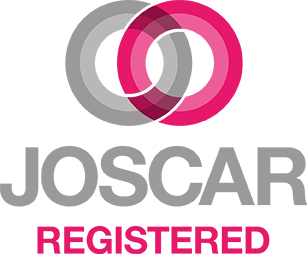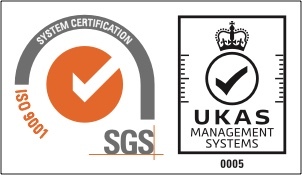
Is it still relevant in business today?
The Situational Leadership® Model was developed by Dr Paul Hersey in the late 1960s, when the world and business climate was very different. The work environment of today is in a state of constant flux and change. Organisations are experiencing a shift from a structured top-down hierarchy to a more collaborative and team-centered dynamic, which is increasing the demand of leaders at all levels throughout a business.
Trust and credibility are the core principles of effective leadership. Employees must trust their leaders to deliver results, and distrust can breed discontent, poor performance and employee turnover – all of which can impact negatively on the bottom line of the organisation.
While 72% of senior leaders think they’re highly trusted as a manager, just 36% of middle managers say they trust their business leader to a great extent. Chartered Management Institute
With businesses now more than ever needing leaders with the skills to successfully collaborate across their organisations we ask whether the Situational Leadership® Model is still relevant in today’s competitive business environment.
The Situational Leadership® Model – the basics
The original Situational Leadership® Model is based on the relationship between leaders and followers. It provides a framework, which addresses leadership situations based on:
- The amount of guidance and direction (task behaviour) a leader gives – this is the extent to which a leader engages in defining roles, structuring activity and providing the what, where, when and how and, if more than one person is involved, who is to do what for a particular task
- The amount of socio-emotional support (relationship behaviour) a leader provides – this is the extent to which a leader engages in two-way communication, facilitates interaction and actively listens to their followers.
- The Performance Readiness® Level that followers exhibit in performing a specific task, function or objective.
The principles of the model include the theory that there is no single best method of leadership. The model proposes that, in order to lead and manage individuals or teams in the most successful way, a leader must adapt his or her style to suit the Performance Readiness of those they are attempting to lead.
“Leadership is the art of getting someone else to do something you want done because he wants to do it” Dwight D. Eisenhower
Situational leaders learn to demonstrate four core, common and critical leadership competencies:
- Diagnose: Understand the nuances of the specific situation they are trying to influence.
- Adapt: Adjust their behaviour in response to the contingences of the situation.
- Communicate: Interact with other in a manner they can understand and accept.
- Advance: Manage the movement towards higher performance.
An effective leader, at any level, must be able to vary their behaviour - managing, coaching and influencing - depending on the task that needs to be accomplished. Not only is this applied to the successful completion of the task in hand, but also to encourage employees to seize upon new challenges and development opportunities.
Relevance of the model in business today
In the business world today, there are literally hundreds, if not thousands, of different leadership styles. However, many of these styles rely heavily on the fundamentals that form the principles of Situational Leadership®.
Research by the Centre for Leadership Studies and Training Industry, Inc. has found that the fundamental principles of the Situational Leadership® Model are equally important to millennials compared with older workers. The model considers the entire lifecycle of a typical employee – from someone who has just started their job and needs direction and support to develop and learn new skills, to a seasoned employee, performing tasks and skills that they mastered some time ago. Therefore, the model provides leaders with a framework for engagement and influencing which is applicable regardless of the employee’s age or skill level.
The ability to successfully Influence has been found to be important in leading employees across a range of industries, job roles and working arrangements, as well as across a full spectrum of knowledge workers. Whether a follower is employed in a highly complex job or working remotely, or in a relatively basic job and part of a tightly knit team, Situational Leadership® has been found to be universally effective.
The Situational Leadership® Model is an easy approach to learn and can quickly have a measurable positive impact on an organisation’s processes and productivity. Tried and tested by thousands of organisations worldwide, Situational Leadership® therefore continues to be one of the best leadership approaches to adopt and remains relevant in the business environment today.
What are the benefits of Situational Leadership?
Adoption of the Situational Leadership® Model has been found to drive business results, such as market share, revenues, employee engagement and retention.
“Situational Leadership® helps leaders learn how to think, before it teaches them what to do”
Dr. Sam Shriver
Also, when the task or directive behaviour of a leader is matched with the needs of a follower, the follower is likely to experience higher levels of satisfaction with the job, higher levels of meaningfulness of the work that they are doing, and improved work-life balance. Here are some other key benefits of the model:
- As a multidirectional model, it can be leveraged for influencing up, down and across the organisation
- It creates a common language of performance
- It accelerates the pace and quality of employee development
- It Is a repeatable process that your leaders can leverage to effectively influence the behaviour of others
- It uses task specificity to serve as a mechanism through which leaders maximise their influence-related impact
- It addresses situations where people are developing or regressing
Effective leadership skills can enable leaders to positively influence the behaviour of others, make strategic decisions, manage conflict and affect change.
Situational Leadership was relevant then and is relevant now
The Situational Leadership Model transcends cultural and generational differences and equips leaders around the world with the skills necessary to drive behavioural change and increase productivity. It prepares leaders for the most pressing challenges pervasive in today’s work environment.
Leadership training on influence can be a powerful way to equip leaders with the tools to better understand why their own attempts to direct employee behaviour succeed or fail. Learning to adjust your approach, depending on the task and the people involved, is a highly successful way of ensuring you are the best leader you can be in any situation.
GBS can help you develop your leadership skills
GBS provides a series of Situational Leadership training courses related to different applications of the model. We help leaders to learn to appropriately balance their task direction with proper relationship behaviour, which helps to maintain high levels of consistent performance across team members.
Situational Leadership® - Accreditation is designed to equip trainers with the necessary skills and knowledge to deliver licensed Situational Leadership® within their own organisation.
The first part of the accreditation process involves experiencing the two-day Situational Leadership®: Building Leaders programme as a participant followed by a third day where you will prepare and deliver an agreed section of the Situational Leadership® programme. Accurate demonstration of knowledge and understanding of the model will result in your accreditation. A licensed ‘Administration Resource Kit’ is provided for each successful accredited trainer to deliver Situational Leadership® training in-house.
Sign-up for our next course in London on 13 - 15th February 2018






